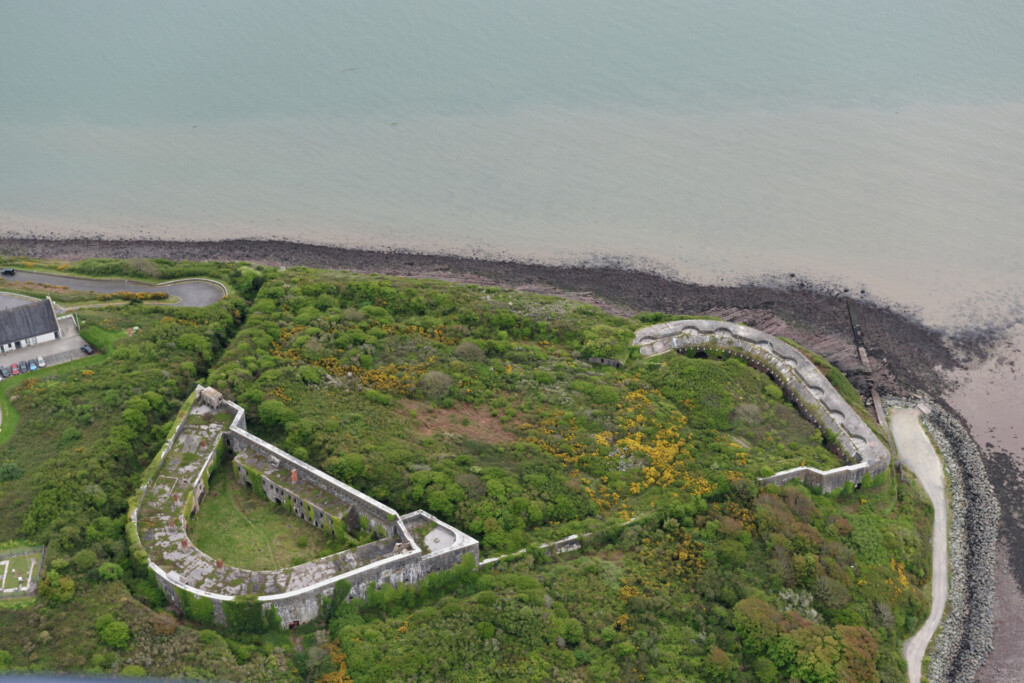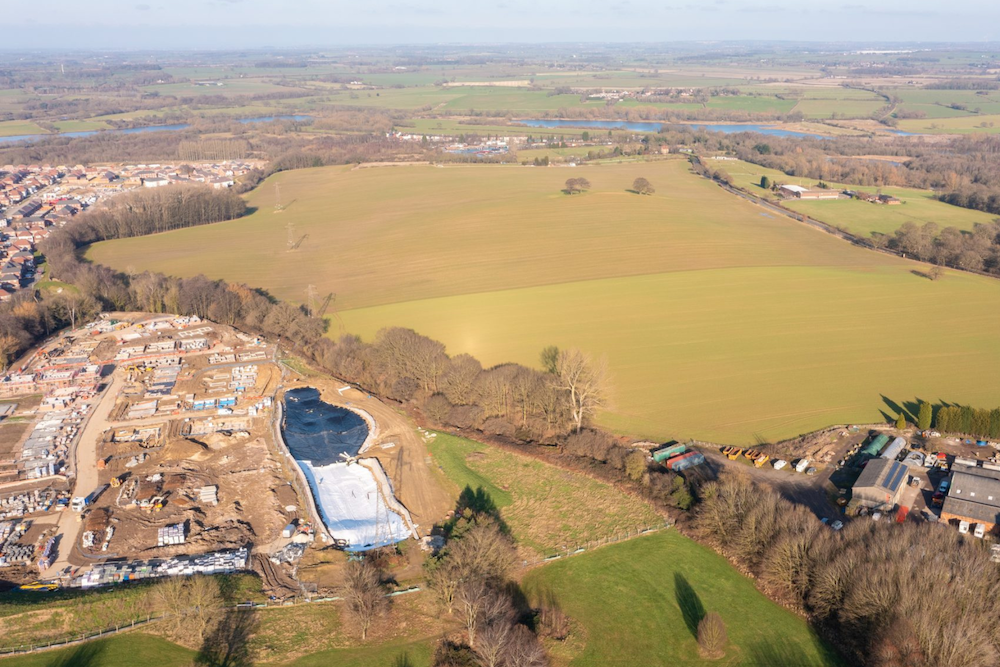Perched on the rugged shores of Milford Haven in Pembrokeshire, Fort Hubberston is a both a Grade II listed Victorian fortress and a Scheduled Ancient Monument.

The Fort, commissioned by Lord Palmerston, was completed in 1863 to defend the town against invasion during the Napoleonic Wars. In 1903, it was abandoned but later revived as a secret base for the Americans for Operation Bolero in the D-Day landings.
The years after saw Fort Hubberston fall into a ruinous condition, following decades of decline, vandalism, and trespassing incidents. It was even listed among the “most endangered” heritage sites in 2011, sparking campaigns by community advocates, politicians, and the Palmerston Fort Society to secure a sustainable future for the monument.
A 2019 plan to transform it into a veterans’ residential centre collapsed, and in 2020, it was purchased with a view to becoming a “living ruin.” However, it returned to the market in 2023. A year later, it caught the eye of businessman Kelsey Trattner. He was drawn to its coastal waterfront location and recognised the untapped potential in its space and infrastructure.
“This was an incredibly rare opportunity to breathe new life into a fascinating building steeped in history and heritage, nestled in a quiet corner of Wales.” Kelsey said.
Deep connection to the sea
Designed as a D-shaped fortress with living quarters for 250 men – which included a pub, coal store, and kitchens – the fort had 11 casemate guns, open batteries, and impressive military architecture including a deep ditch, counterscarp gallery, and bombproof roofs.
The site spans around 2.95 acres, with the boundary running past the fortress walls and to the tide line. It is strategically situated on the west bank of the Milford Haven Waterway – the largest estuary in Wales and one of the deepest in the world.
What is a Scheduled Ancient Monument?
A Scheduled Ancient Monument is a nationally important archaeological site that is legally protected from unauthorised change or damage. Scheduling aims to preserve the archaeological evidence that survives within these sites.
Specialist property expertise
Having no prior experience in purchasing a listed building or a scheduled ancient monument, Kelsey turned to Lodders’ Rhiannon Edwards, partner and head of Town & Country Homes, to help him navigate the complex legal landscape surrounding the purchase.
With strong expertise in listed buildings and properties with complex planning histories, Rhiannon was able to complete the purchase in just four months. She said: “This is most definitely one of the more complex and fascinating properties I have advised on recently, and Kelsey has some exciting plans that I shall be following with interest!”
The Fort is protected by the Welsh historic environment service CADW, to whom Kelsey must apply to for permission to physically alter any part of it. This process is designed to protect the monument, its setting, and its features from any unsympathetic works.
“Plans for the Fort are in their early stages and we’re actively exploring our options.” Kelsey explained. “As part of this, I have been consulting with the small but knowledgeable community of fellow fort owners across the UK. Throughout the process, Rhiannon’s legal support and guidance have been invaluable, and we’re truly grateful for her expertise, particularly in relation to Listed Buildings, Scheduled Ancient Monuments, and the protections surrounding them.”
This article first appeared in Issue 11 of our client magazine, Lodders Life. Read this and more articles here.
Contact usContact us
Need more advice?
For help with a legal problem or more information on any of our services at Lodders, please get in touch with our friendly team. You can contact us via the number or email address below, or fill in the form and we will get back to you as quickly as we can.

Contact a member of the team
Read more
Other news, insights and events







